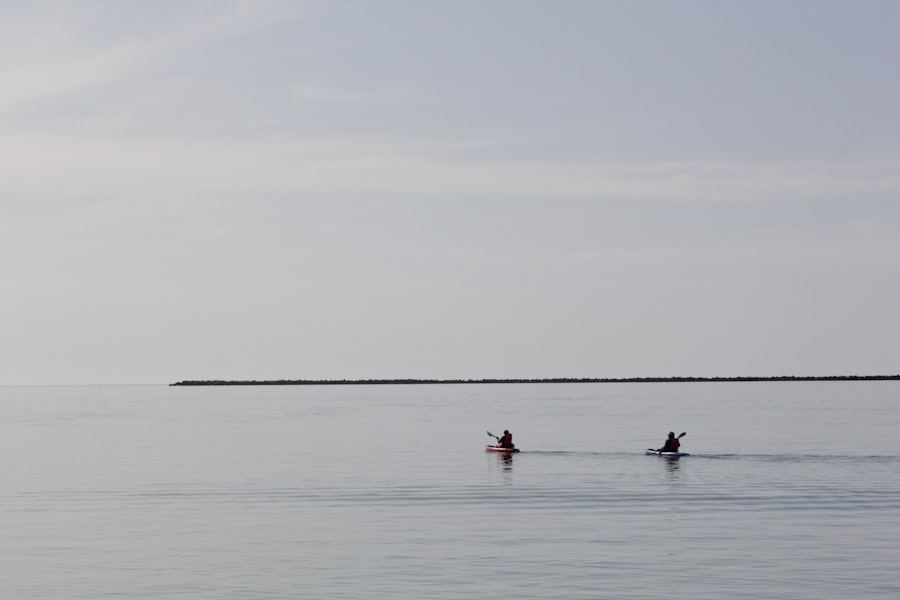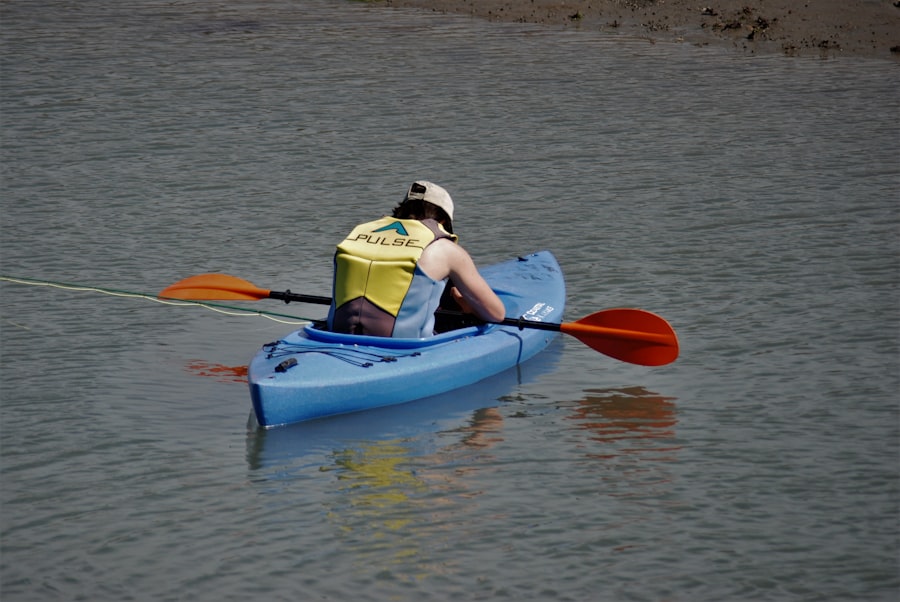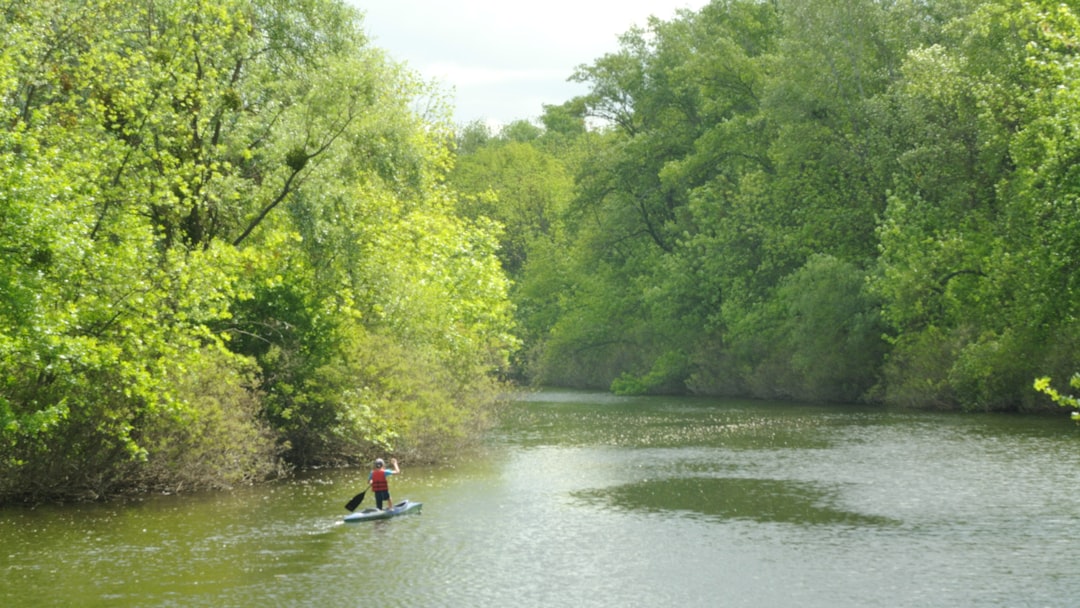The Drake Passage, a body of water that separates South America from Antarctica, is renowned for its tumultuous seas and breathtaking vistas. Stretching approximately 600 miles, this passage is not only a critical maritime route but also a gateway to one of the most remote and pristine regions on Earth. Named after the English explorer Sir Francis Drake, who navigated these waters in the late 16th century, the Drake Passage has become synonymous with adventure and exploration.
It serves as a vital link for vessels traveling between the Atlantic and Pacific Oceans, making it a significant area for both commercial shipping and tourism. For many adventurers, crossing the Drake Passage is a rite of passage, a thrilling prelude to the wonders of Antarctica. The waters are often characterized by their unpredictable nature, with waves that can reach heights of over 30 feet.
This unpredictability adds an element of excitement and challenge to any journey through the passage. As travelers prepare to embark on their voyage, they are often filled with a mix of anticipation and trepidation, knowing that they are about to traverse one of the most dynamic marine environments on the planet.
Key Takeaways
- The Drake Passage is a treacherous body of water located between South America’s Cape Horn and the South Shetland Islands of Antarctica.
- When preparing for a journey through the Drake Passage, it is important to pack warm, waterproof clothing and expect rough seas and strong winds.
- Navigating the Drake Passage presents challenges such as unpredictable weather, rough seas, and potential seasickness, requiring careful consideration and preparation.
- Wildlife encounters in the Drake Passage may include sightings of whales, seals, and various seabird species, offering unique opportunities for wildlife enthusiasts.
- The Drake Passage holds significant historical importance as a route for early explorers and continues to be a vital link for scientific research and exploration in Antarctica.
Preparing for the Journey: What to Pack and Expect
Preparation is key when embarking on a journey through the Drake Passage. Travelers must consider not only their personal comfort but also the unique challenges posed by the environment. Packing appropriate clothing is essential; layers are recommended to accommodate fluctuating temperatures.
Waterproof outerwear, thermal undergarments, and sturdy footwear are crucial for staying warm and dry during the crossing. Additionally, travelers should not forget essentials such as sunscreen, sunglasses, and a good camera to capture the stunning landscapes. Beyond clothing, it is important for adventurers to mentally prepare for the journey ahead.
The Drake Passage is known for its rough seas, and travelers should be ready for potential seasickness. Many choose to bring motion sickness medication or natural remedies to alleviate discomfort. Understanding that the crossing can take anywhere from 24 to 48 hours helps set realistic expectations.
While some may experience a smooth passage, others may find themselves navigating through choppy waters, making it vital to approach the journey with an open mind and a spirit of adventure.
Navigating the Drake Passage: Challenges and Considerations

Navigating the Drake Passage presents a unique set of challenges that require careful consideration from both crew and passengers. The unpredictable weather patterns can change rapidly, leading to sudden storms or calm seas within hours. This variability necessitates skilled seamanship and an experienced crew who can adapt to changing conditions.
The passage is also home to strong currents and shifting icebergs, which can pose additional hazards for vessels traversing these waters. Moreover, understanding the maritime regulations and safety protocols is crucial for ensuring a safe journey. The International Association of Antarctica Tour Operators (IAATO) provides guidelines that help maintain safety standards while protecting the fragile Antarctic environment.
Travelers should familiarize themselves with these regulations and respect the natural surroundings during their journey. By doing so, they contribute to the preservation of this pristine ecosystem while enjoying their adventure through one of the world’s most iconic maritime routes.
Wildlife Encounters: What to Look Out For
| Wildlife Encounter | What to Look Out For |
|---|---|
| Bears | Tracks, scat, overturned rocks, and torn-up logs |
| Mountain Lions | Scratches on trees, tracks, and scat |
| Snakes | Rustling in leaves, sunning on rocks, and shed skin |
| Wolves | Tracks, scat, and howling |
One of the most exhilarating aspects of crossing the Drake Passage is the opportunity to encounter diverse wildlife. The waters are teeming with life, offering glimpses of various species that thrive in this unique ecosystem. Travelers may spot majestic albatrosses gliding effortlessly above the waves, their wingspans reaching up to 12 feet.
These magnificent birds are often seen following ships, providing a captivating spectacle as they soar gracefully in the wind.
Humpback whales, orcas, and minke whales are among the species that can be observed during crossings.
The sight of a whale breaching or a seal lounging on an iceberg creates unforgettable memories for those fortunate enough to witness these encounters. Travelers should remain vigilant and keep their cameras ready, as these moments can occur unexpectedly and offer a glimpse into the rich biodiversity of the region.
The History and Significance of the Drake Passage
The Drake Passage holds significant historical importance as it has been a critical route for explorers and scientists alike. In the 16th century, Sir Francis Drake became one of the first Europeans to navigate these waters, paving the way for future expeditions to Antarctica. His journey marked a turning point in maritime exploration, as it opened up new possibilities for trade and discovery in uncharted territories.
In modern times, the Drake Passage continues to be significant for scientific research and environmental studies. The region serves as a vital area for understanding climate change and its impact on marine ecosystems. Researchers often conduct studies in these waters to monitor changes in ocean temperatures, currents, and wildlife populations.
As such, crossing the Drake Passage is not only an adventure but also an opportunity to engage with ongoing scientific efforts aimed at preserving this fragile environment for future generations.
Kayaking in the Drake Passage: Tips and Techniques

For those seeking an even more immersive experience in the Drake Passage, kayaking offers a unique perspective on this stunning landscape. Paddling through icy waters allows adventurers to get up close and personal with icebergs and marine life while enjoying a sense of tranquility that larger vessels cannot provide. However, kayaking in these waters requires careful preparation and knowledge of essential techniques.
Before embarking on a kayaking excursion, travelers should ensure they have proper training and equipment. Wearing a dry suit is crucial for staying warm and dry while paddling in cold waters. Additionally, understanding basic kayaking techniques such as bracing and edging can enhance stability in choppy conditions.
It is also advisable to practice self-rescue techniques in case of capsizing, ensuring that kayakers are prepared for any unexpected situations that may arise during their adventure.
Safety Measures and Emergency Protocols
Safety is paramount when navigating the unpredictable waters of the Drake Passage. Travelers should familiarize themselves with emergency protocols established by their expedition team before setting sail. This includes understanding evacuation procedures, communication methods, and first aid measures in case of injury or illness.
Additionally, wearing life jackets at all times while on deck or participating in water activities is essential for ensuring personal safety. Crew members are trained to handle emergencies effectively; however, passengers should also take responsibility for their own safety by remaining aware of their surroundings and adhering to safety guidelines provided by their guides. By prioritizing safety measures, travelers can enjoy their journey through the Drake Passage with peace of mind.
Weather and Climate: Understanding the Conditions
The weather in the Drake Passage can be notoriously unpredictable, making it essential for travelers to stay informed about current conditions before embarking on their journey. The region experiences strong winds and rapidly changing weather patterns due to its geographical location between two major ocean currents—the Antarctic Circumpolar Current and the Humboldt Current. This results in a climate that can shift from calm seas to turbulent storms within a short period.
Travelers should be prepared for varying temperatures as well; conditions can range from mild to frigid depending on the time of year. The summer months (November to March) generally offer more favorable weather for crossing, with milder temperatures and longer daylight hours. However, even during this period, it is crucial to remain vigilant about changing conditions and dress appropriately for potential cold snaps or rain.
The Beauty of the Drake Passage: Scenic Highlights
Despite its reputation for rough seas, the Drake Passage boasts breathtaking scenery that captivates all who traverse its waters. The stark contrast between the deep blue ocean and towering icebergs creates a stunning visual landscape that leaves lasting impressions on travelers’ minds. As ships navigate through this passage, passengers are often treated to panoramic views of snow-capped mountains rising majestically from the sea.
The beauty of the Drake Passage extends beyond its physical features; it also encompasses its rich cultural history and significance as a gateway to Antarctica’s wonders. As travelers gaze upon this remarkable landscape, they are reminded of their connection to nature and the importance of preserving such pristine environments for future generations.
Personal Experiences: Stories from Kayakers
Personal stories from those who have kayaked in the Drake Passage reveal both challenges and triumphs that come with this unique adventure. Many kayakers recount moments of awe as they paddled alongside massive icebergs or witnessed whales breaching just feet away from their boats. These encounters often evoke feelings of humility and gratitude for being part of such an extraordinary ecosystem.
However, not all experiences are without difficulty; some kayakers share tales of battling strong currents or navigating through rough seas that tested their skills and resolve. These challenges often lead to personal growth and newfound confidence in one’s abilities. Ultimately, each story reflects a deep appreciation for nature’s beauty and an understanding of its power—a sentiment shared by all who venture into these remarkable waters.
Reflecting on the Adventure
Crossing the Drake Passage is more than just a journey; it is an adventure filled with challenges, discoveries, and unforgettable experiences.
As travelers reflect on their time spent navigating these waters, they carry with them not only memories but also a renewed sense of respect for nature’s beauty.
In conclusion, whether one is kayaking through icy waters or simply crossing aboard a vessel, the Drake Passage offers an unparalleled opportunity for exploration and connection with one of Earth’s last frontiers. As adventurers return home with stories to share, they become ambassadors for conservation efforts aimed at protecting this fragile environment—ensuring that future generations can also experience the magic of this remarkable passage.
Kayaking the Drake Passage is an exhilarating adventure that challenges even the most seasoned explorers. For those interested in learning more about similar thrilling expeditions, an article on MyGeoQuest provides insights into various adventurous quests around the globe. You can explore more about these exciting journeys by visiting this related article on their website. This resource offers a glimpse into the world of extreme exploration, perfect for those who are inspired by the daring feat of kayaking across one of the most treacherous bodies of water on Earth.
WATCH NOW! Drake Passage: Earth’s Deadliest Waters Revealed
FAQs
What is the Drake Passage?
The Drake Passage is the body of water between the southern tip of South America and the northern tip of the Antarctic Peninsula. It is known for its rough seas and challenging weather conditions.
What is kayaking the Drake Passage?
Kayaking the Drake Passage involves paddling through the waters of the passage in a kayak. It is a challenging and adventurous activity that allows participants to experience the remote and pristine environment of the Antarctic region.
Is kayaking the Drake Passage dangerous?
Kayaking the Drake Passage can be dangerous due to the unpredictable weather and rough seas. Participants should have prior kayaking experience and be prepared for extreme conditions.
What are the benefits of kayaking the Drake Passage?
Kayaking the Drake Passage offers the opportunity to explore a unique and untouched environment, observe wildlife such as whales and penguins, and challenge oneself in a remote and rugged setting.
What should I consider before kayaking the Drake Passage?
Before kayaking the Drake Passage, participants should consider their level of kayaking experience, physical fitness, and ability to handle extreme weather conditions. It is also important to have the necessary gear and equipment for the journey.
